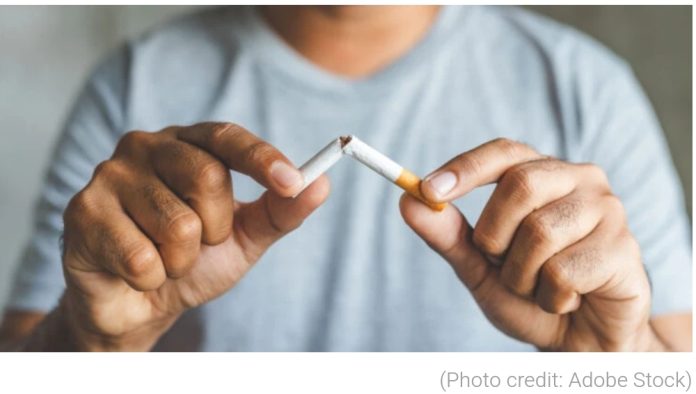In recent years, conversation around mental health, particularly substance use disorders, has increasingly spotlighted an unconventional ally: psychedelics. A recent study published in Frontiers in Psychiatry has cast a new light on the role these substances may play in combating substance abuse, revealing that a significant majority of individuals who have used psychedelics report a decrease or cessation in the use of other substances, such as alcohol, cannabis, and tobacco.
“Early research (1950-1970) provided preliminary evidence that psychedelics might be effective for reducing substance use or treating substance use disorder (SUD). A growing number of modern clinical trials have supported these findings, primarily with alcohol and tobacco use disorders,” explained study author Nicolas Glynos, a postdoctoral research fellow at the Michigan Psychedelic Center and Chronic Pain and Fatigue Research Center at the University of Michigan.
“Contrary to clinical trials, observational studies of naturalistic psychedelic use can provide a more ecologically valid perspective of psychedelic use trends and outcomes. We had previously investigated changed substance use patterns following naturalistic psychedelic use among North American populations, and we found widespread decreases in substance use following use of a psychedelic.”
“Therefore, we designed this study to assess self-reported changed substance use following use of a psychedelic, and we recruited a larger sample size (> 5,000) which included participants from across the globe.”
This survey, known as the Global Psychedelic Survey, was distributed between May 19 and June 2, 2023, leveraging the reach of online platforms associated with psychedelic organizations, such as the Multidisciplinary Association for Psychedelic Studies (MAPS) and its counterparts in various countries, as well as social media. The survey aimed to gather data from English-speaking adults aged 21 years and older.
The substances in question spanned a wide array of psychedelics, from the “classic” psychedelics like LSD, psilocybin, and DMT, to “atypical” psychedelics such as MDMA and ketamine. Participants were queried about their use of these substances, including the types of psychedelics they used, dosages (differentiating between microdoses and macrodoses), and their motivations for using these substances, ranging from medical treatment to personal growth and recreational purposes.
The survey also collected data on the use of other non-psychedelic substances and medications to assess changes in their use following psychedelic experiences. A critical part of the survey involved asking participants directly if and how their use of any non-psychedelic substances changed as a result of their psychedelic use. This inquiry was structured to capture a range of outcomes, from cessation or decrease in use to no change, or even initiation or increase in use.
A significant portion of the surveyed population, 70.9%, reported either ceasing or reducing their use of one or more non-psychedelic substances, including alcohol, cannabis, tobacco, antidepressants, amphetamines, cocaine, prescription opioids, and illicit opioids, following their use of psychedelics.
Psilocybin, a classic psychedelic known for its presence in certain varieties of “magic” mushrooms, emerged as the most influential substance in this context. It was reported as the most impactful psychedelic leading to either the cessation or reduction of other substance use. Furthermore, more than a quarter of respondents indicated that the positive changes in their substance use lasted for at least 26 weeks.
“Factors associated with decreased substance use included a motivation to decrease one’s substance use or to self-treat a medical condition,” Glynos told PsyPost. “These findings may help inform future studies of the potential effectiveness of non-clinical psychedelic use on changing patterns of substance use.”
Furthermore, the research found demographic and usage pattern associations with reported changes in substance use. Men and younger participants, as well as those who had used a wider variety of psychedelics or consumed both micro and macro doses, were more likely to report a decrease or cessation in the use of other substances.
“Having a global sample allowed us to compare changed substance use patterns across different geographical regions including Asia Pacific, Central Asia, Middle East and Africa, Latin America, and North America,” Glynos said.
“Surprisingly, we found that for all the non-psychedelic substances in the study, the proportions of increased or initiated use following naturalistic psychedelic use were highest for residents of North America, relative to those who reside in other regions of the globe. We also found that residing in North America was a significant predictor of increasing or initiating substance use.”
While a significant majority of respondents reported a decrease or cessation in the use of various non-psychedelic substances following their psychedelic experiences, a notable proportion—19.8%—indicated that their psychedelic use was followed by an increased or initiated use of at least one other substance. Among these, the highest proportions were observed for illicit opioids (14.7%) and cannabis (13.3%).
However, as with all research, this study has its limitations. The reliance on self-reported data introduces potential biases, including the accuracy of participants’ recollections and the possibility of overestimating the effects of psychedelics due to pre-existing beliefs about their benefits. The survey’s distribution through organizations with a positive stance towards psychedelics might have also skewed the sample towards individuals with more favorable views on these substances.
“Because the survey relied on a cross-sectional assessment of self-reported substance use, we are unable to confirm the reported changes in psychedelic or non-psychedelic substance use patterns,” Glynos noted. We are also unable to confirm the extent to which perceived changes were correctly attributed to psychedelic use as a direct causal factor.”
Despite these caveats, the study provides important insight into psychedelics’ potential role in treating substance use disorders and other mental health conditions.
“As efforts to decriminalize, medicalize, and commercialize psychedelics proceed across the globe, a clear understanding of naturalistic use trends will be essential to ensure optimal public health and adequate education surrounding these substances,” Glynos explained. “We believe that investigation of naturalistic psychedelic use may provide a more ecologically valid perspective of global psychedelic use that avoids some of the challenges inherent to clinical psychedelic research.
“We’re interested in further characterizing the global psychedelic use landscape, and potentially designing novel hybrid studies that combine naturalistic psychedelic use with supportive therapies and clinically relevant outcome measures.”
The study, “Psychedelic substitution: altered substance use patterns following psychedelic use in a global survey,” was authored by Nicolas G. Glynos, Jacob S. Aday, Daniel Kruger, Kevin F. Boehnke, Stephanie Lake, and Philippe Lucas.














